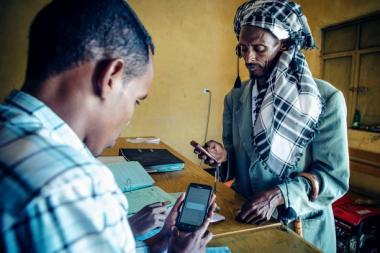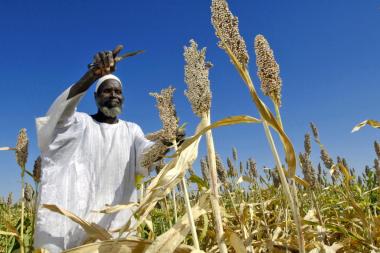Issue brief: Unravelling the knot: Addressing wicked problems through stakeholder engagement
This brief investigates the application of a decision making tool for governance designed to tackle complex problems – Stakeholder Approach to Risk Informed and Evidence Based Decision Making.

This brief investigates the application of a decision making tool for governance specifically designed to these tackle complex, wicked problems – Stakeholder Approach to Risk Informed and Evidence Based Decision Making (SHARED). SHARED is an innovative example of a wider class of ‘stakeholder engagement frameworks’, a common yet understudied response to ‘wicked’ problems. These frameworks involve multiple stakeholders to uncover locally relevant and politically legitimate solutions. SHARED was selected for study as it has a history of application in Sub-Saharan Africa, and strongly foregrounds using evidence and data as key elements for navigating intractable problems.
Our work builds on previous SPARC research focusing on the impact of SHARED in single country contexts. However, to our knowledge, this is the first comparative study addressing factors for success and limitations.
We draw from studies of two SHARED applications from northern Kenya and southern Ethiopia respectively, examining the framework’s strengths and weaknesses in addressing two complex issues. In the Kenya case, SHARED was applied to improve the allocation of public funding within Turkana County, a dryland area of Kenya experiencing chronic water shortages. The Ethiopia case examines the decision-making with regard to reversing deforestation in Ethiopia’s drylands, involving both national and sub-national policies and stakeholders.
Our case studies suggest the following lessons for policy makers and donors seeking to improve decision-making with regard to complex, ‘wicked’ problems:
Stakeholders – government, non-governmental organisation, and communities – must successfully navigate four interconnected dimensions of decision-making: political will, evidence, stakeholder coordination, and institutional capacity.
The SHARED framework – the intervention studied in this report – provided a structured framework and tools to address these aspects, primarily by facilitating high-quality evidence flow and by implementers serving as neutral mediators within the political landscape.
Decision-making for resilience is not a discrete event, but a long-term process of improving governance. In our cases, the SHARED approach was constrained by short funder time horizons, which primarily focused on specific decision points or policies, whilst having limited resources and mandate to build long-term institutional capability.
Building political will was often a determining factor of issues that could be tackled. However, SHARED’s capacity to build political will was dependent on staffing for resource-intensive stakeholder engagement. As a result, in some circumstances, SHARED implementation was not able to address foundational issues.
Technology is powerful in generating excitement, but care is warranted. Technological tools for collecting and displaying data in a central platform generated excitement, but, in both cases, their later usefulness was overestimated. The cost threshold for technological tools to operate at scale was higher than implementers or funders anticipated. As such, the tools did not have realistic, long-term use cases.
Stakeholder engagement is resource intensive. Solving complex and interrelated problems requires engaging diverse stakeholders over long time horizons. Funders and implementers should modulate the intensiveness of implementation according to the challenges in specific political economy environments.
Addressing complex social problems can benefit from well-defined stakeholder engagement frameworks like SHARED. Nevertheless, the implementation of such frameworks varies depending on the specific issue, context, and available resources. Based on our findings, we propose the following recommendations:
Match intensity and resourcing to the state of the political economy: The deployment of intensive versus extensive application of engagement models should depend on the state of the political economy (aligned, mixed, or adverse). Intensive applications are more suitable for issues facing an adverse political economy, where political will is limited or non-existent.
Encourage longer time horizons for investments in decision-making: Extending stakeholder engagement timelines beyond the standard five-year framework, alongside long-term resourcing for institutionalisation, allows for systems-level change.
Prioritise the development of institutional capacity: Alongside proximate policy decisions, engagement must build local, long-term institutional capabilities that can ensure the sustainability and effectiveness of the implemented solutions.
The stakeholder engagement required to address wicked problems is resource-intensive: Funders and policymakers should allocate sufficient resources for the active cultivation of political will among diverse stakeholders. While transaction-intensive, this can facilitate the resolution of foundational issues and promote long-term change.
Resist the urge to view technological tools as quick fixes: While technological tools hold promise and can generate enthusiasm among stakeholders, project designers and funders should be cautious in equating technology with innovation, and likewise consider what is required to deploy truly scalable and sustainable tools.


